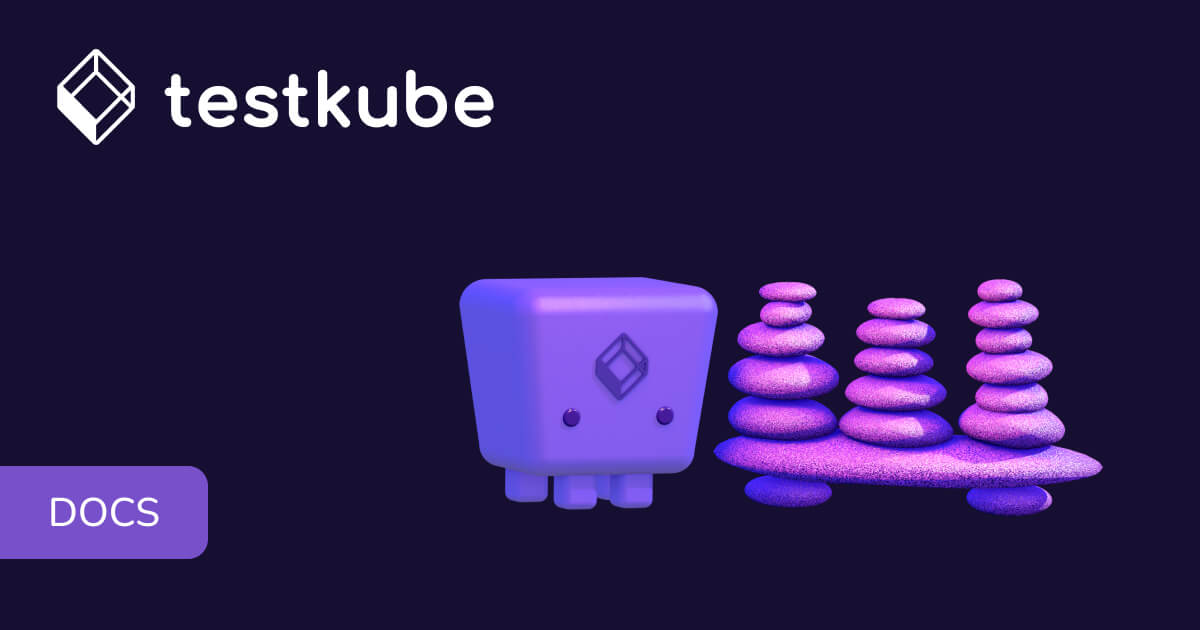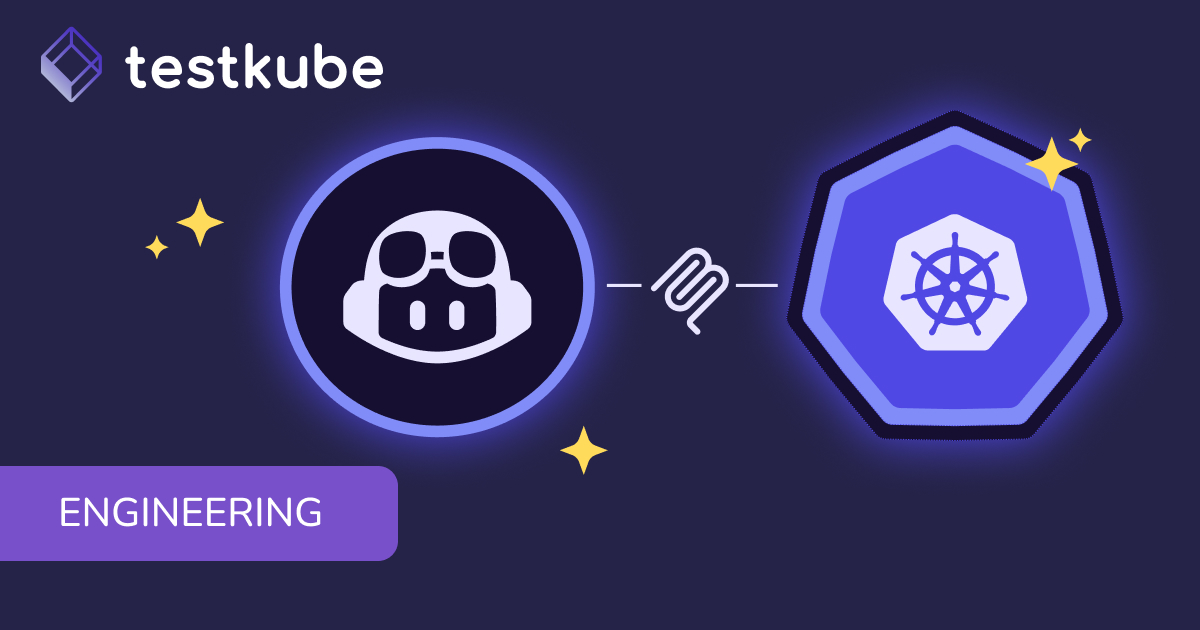Table of Contents
What Does Test Workflow Mean?
A Test Workflow represents the end-to-end process of running tests in a structured manner. It defines when and how tests are triggered, the environments in which they run, the tools or executors involved, and how results are collected and reported.
In Kubernetes-native environments, workflows are especially important for ensuring tests are executed reliably across clusters and that results feed back into development pipelines without friction.
A test workflow is essentially the orchestration layer that manages your entire testing process from start to finish. It encompasses everything from initiating test execution to gathering and analyzing results, creating a repeatable and automated testing pipeline that integrates seamlessly with your development lifecycle.
Test workflows bring structure to complex testing scenarios by defining clear steps, dependencies, and conditions for test execution. They eliminate manual intervention, reduce human error, and ensure that every test runs in the correct sequence with the proper configuration and environmental setup.
Why Test Workflows Matter
Modern software delivery relies on automation. Without a workflow to coordinate testing steps, teams face issues like:
- Inconsistent test execution across environments
- Delayed feedback cycles from manual setup or monitoring
- Difficulty scaling tests in CI/CD pipelines
- Fragmented reporting that obscures test insights
By using well-defined workflows, teams can reduce bottlenecks, automate repeatable tasks, and ensure testing is consistent across every stage of delivery.
The Business Impact of Test Workflows
Implementing robust test workflows directly impacts development velocity and software quality. Teams with mature test workflows typically experience faster release cycles, fewer production incidents, and improved developer productivity. By automating the repetitive aspects of testing, developers can focus on writing code and building features rather than managing test infrastructure.
Test workflows also provide visibility and accountability. When every test execution is logged, tracked, and reported through a workflow, teams gain insights into testing patterns, failure trends, and areas requiring additional test coverage. This data-driven approach to quality assurance leads to more informed decisions about resource allocation and testing strategy.
Common Challenges Without Test Workflows
Organizations that lack formalized test workflows often struggle with several recurring problems. Without workflows to standardize test environments, teams experience inconsistent results where tests pass locally but fail in CI/CD, or vice versa. Manual test execution or poorly orchestrated automated tests delay critical feedback to developers. Tests that don't clean up after themselves or run sequentially when they could be parallel consume unnecessary cloud resources and drive up costs. When testing processes aren't codified in workflows, knowledge remains trapped with individual team members, creating bottlenecks and risks.
How Test Workflows Work with Testkube
In Testkube, workflows are Kubernetes-native and can:
- Run any test type (API, UI, performance, load, custom) directly inside clusters
- Define pre- and post-test actions like setting up environments or cleaning resources
- Trigger executions from CI/CD systems such as GitHub Actions, GitLab, Jenkins, or CircleCI
- Connect results to dashboards, notifications, and external observability tools
- Scale test execution across pods and nodes for speed and reliability
Workflows act as the "glue" between developers, CI/CD systems, and Kubernetes infrastructure.
Kubernetes-Native Testing Advantages
Running test workflows natively in Kubernetes provides several architectural benefits. Tests execute in the same environment where your applications run, eliminating discrepancies between test and production environments. This proximity to production reduces surprises and increases confidence in test results.
Kubernetes-native workflows leverage built-in orchestration capabilities like pod scheduling, resource management, and horizontal scaling. Tests can automatically scale to meet demand, running hundreds or thousands of tests in parallel across available cluster resources. This elasticity means teams don't need to maintain dedicated test infrastructure that sits idle between test runs.
Integration with CI/CD Ecosystems
Testkube workflows integrate deeply with existing CI/CD platforms, allowing teams to trigger Kubernetes-native tests from familiar tools. Whether you're using GitHub Actions, GitLab CI, Jenkins, CircleCI, Azure DevOps, or any other CI/CD platform, Testkube workflows can be invoked as part of your existing pipelines.
This integration is bidirectional. Not only can CI/CD systems trigger Testkube workflows, but workflows can also report results back to these systems, updating pull request statuses, posting comments, or gating deployments based on test outcomes.
Real-World Example
A QA team wants to validate an API before each deployment:
- Workflow is triggered when new code is pushed to GitHub.
- Pre-test step provisions a staging namespace in Kubernetes.
- Workflow runs Postman API tests and JMeter load tests inside the cluster.
- Results are collected, stored as artifacts, and surfaced in the Testkube Dashboard.
- Workflow posts pass/fail status back to GitHub and Slack.
This ensures that every change is validated consistently before promotion to production.
How This Workflow Works in Practice
The workflow uses a webhook to listen for GitHub push events on specific branches. When triggered, the pre-test phase creates an isolated Kubernetes namespace with all necessary dependencies including databases, cache layers, and external service mocks. The workflow then orchestrates multiple test types simultaneously, with Postman collections validating API contracts and JMeter simulating realistic load patterns. As tests complete, the workflow aggregates results from all test types, generates summary reports, and uploads detailed logs and metrics to object storage. Finally, it updates the GitHub commit status and posts rich notifications to Slack with summary statistics and links to the dashboard.
Benefits of This Approach
By implementing this workflow, teams achieve faster testing cycles, earlier bug detection, and improved consistency. Parallel execution in Kubernetes significantly reduces overall testing time. Automated workflows catch issues within minutes of code commit rather than hours or days later. Test environments automatically scale and clean up, reducing cloud costs compared to persistent test infrastructure. Stakeholders across the organization gain real-time access to testing status and quality metrics through unified dashboards.




